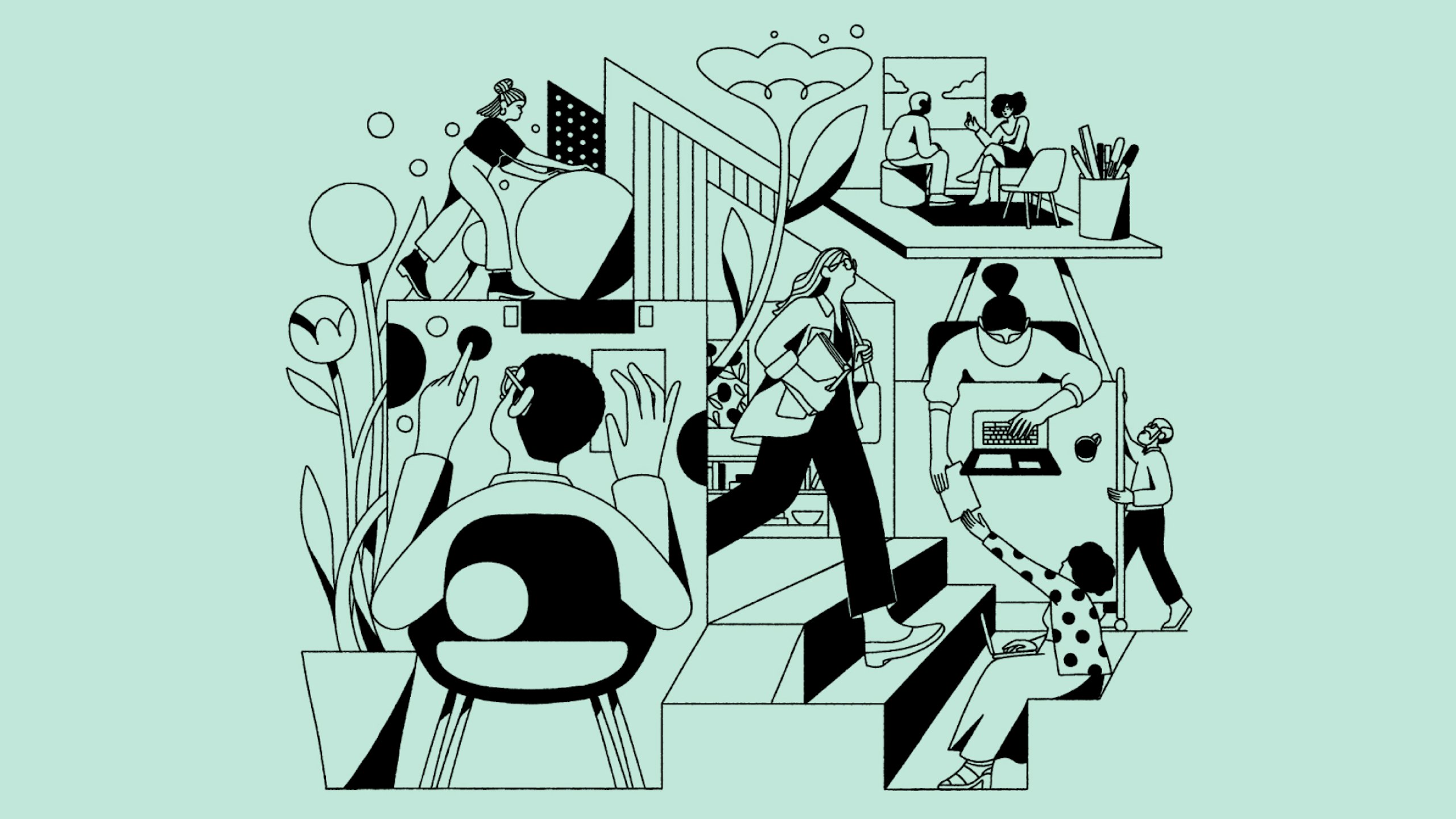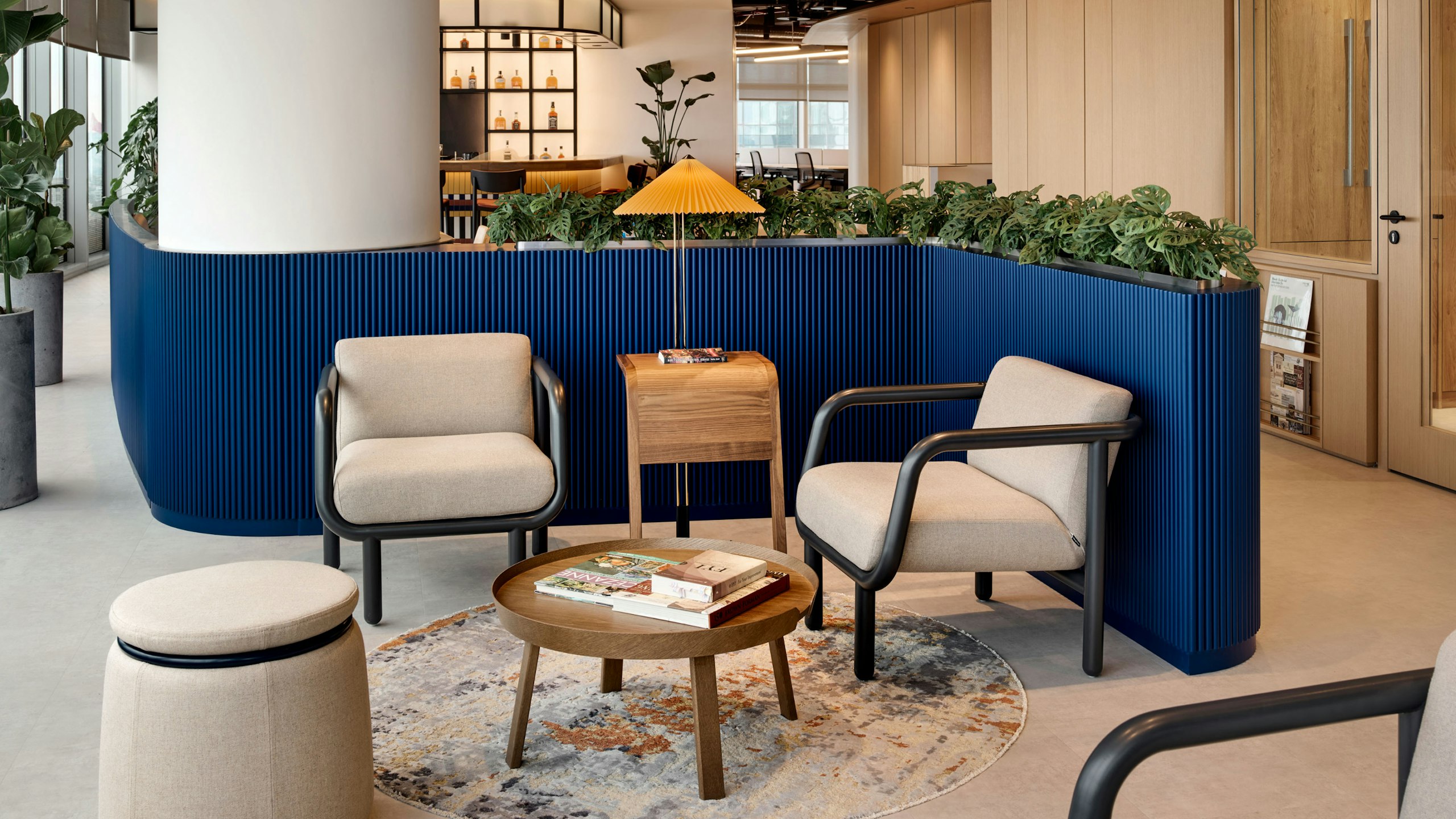The space to harness change
Organizations that embrace change gain competitive advantage. The work environment can play an important role.
Dec 5, 2023
4 minutes

The ability to navigate change is a characteristic of all successful organizations. Finding newer, better, and more effective ways of operating can grow revenues, expand markets, drive progress, and achieve efficiencies. In other words: Embracing change leads to success.
The other side of change
On the other hand, change can also feel extremely disruptive and unsettling.
The World Uncertainty Index (WUI) has charted the acceleration of uncertainty over time since 1990. Organizations not only face higher uncertainty than ever, but they also have little control over its contributing factors.*
Things like COVID, supply chain disruption, technological competition, and political unrest have overwhelmed organizations. The uncertainty is increasing and becoming more erratic, with a more global reach.
The effects of this uncertainty have driven the constant reevaluation and reinvention of businesses—like shifting business goals to shorter, faster project cycles—and fueled the rise of new technologies, such as AI.
Organizations today not only face higher uncertainty than ever, but they also have little control over its contributing factors.
Managing change together
As organizations try to keep pace in a more complex business environment, they need new ways to spark innovation, build camaraderie, and support the ever-changing needs of their global workforce.
The physical workplace offers a logical starting point.
A work environment designed to support people, aid the flow of information, promote creativity, and enhance culture can help a company solve challenging business problems and remain competitive. In such an environment, people get comfortable taking risks and asking for the things they need. Once they reach this level of psychological safety, people stop being afraid of change. And they realize they can thrive through it.
Global management consulting firm McKinsey reports that among today’s most productive organizations, 16% continually iterate or tweak processes in response to changing external factors. None of the least productive organizations exhibit these behaviors.*


Flexibility in the built environment
Flexibility for individuals
Helping people adapt to change by giving them control of their environment and designing spaces to adapt to employees—not the other way around.
Why is this important? Being comfortable with change is a key factor in psychological safety, which affects engagement, performance, and results.
Flexibility for teams
Helping teams adapt more easily to change through the ability to reconfigure the team neighborhood to reduce disruption and build resiliency.
Why is this important? Employee turnover and teams changing out or shifting focus happen at a far greater rate than ever before. Supportive team environments make a difference. When team members participate in the design of their space, the experience itself builds camaraderie even beyond the shared sense of ownership.
Flexibility for organizations
Helping organizations embrace change through multipurpose, connected, flexible spaces that adapt to support people where and when they work.
Why is this important? The need for flexibility extends beyond physical space. Decision-makers must plan for a future in which dynamic and distributed ways of working are the norm.***
Instead of being unsettled by the uncertainty, let’s focus on navigating and embracing change and design for flexibility.
Change is here to stay
There will always be change. That’s just a fact. Instead of being unsettled by the uncertainty, let’s focus on navigating and embracing change and design for flexibility.
At MillerKnoll, we help organizations embrace change by connecting them with furnishings and tools that give people control over their environment. Designs from our collective of brands empower people, teams, and organizations to adapt space to meet their needs by the minute, the hour, or the day.

Test, learn, then change some more
Because personal needs change so often, we advocate for organizations to practice inclusive design. This participatory approach to design requires engagement with end-users throughout the process to ensure a space that accommodates the widest range of needs on Day One and stays effective over time.
Provide change management practices to help people get comfortable with change and instill psychological safety.
Test the effectiveness of a space with pilot projects to engage employees and make sure that it meets everyone’s unique needs.
Continue to learn, adapt, and improve how well your workspace functions for the people who use it by designing it with them, not for them.
We all have a choice. We can muddle through change, or we can embrace it and manage it to our competitive advantage.
Choose wisely.
If you need help knowing where to begin, let’s talk.
Sources:
* Ahir, Bloom, Furceri, “World Uncertainty Index,” National Bureau of Economic Research, Working Paper 29763.
** “Future of Work: Managing Risks of the Hybrid Workplace,” McKinsey, July 2021.
*** “The Future of Work Survey 2022,” Jones Lang LaSalle (JLL), July 2022.
3-point recap
Change can feel disruptive and cause uncertainty, but it also holds enormous potential to drive organizational success.
A workplace that can adapt to the needs of individuals, teams, and the organization helps people get more comfortable with change and build resiliency.
Optimizing workplace flexibility is also an ever-changing process. By practicing inclusive design, organizations continue to learn and adapt based on people’s changing needs.
Stay in the know
Our newsletter covers a range of topics, from insights and design ideas to announcements about new products from our collective of brands.







